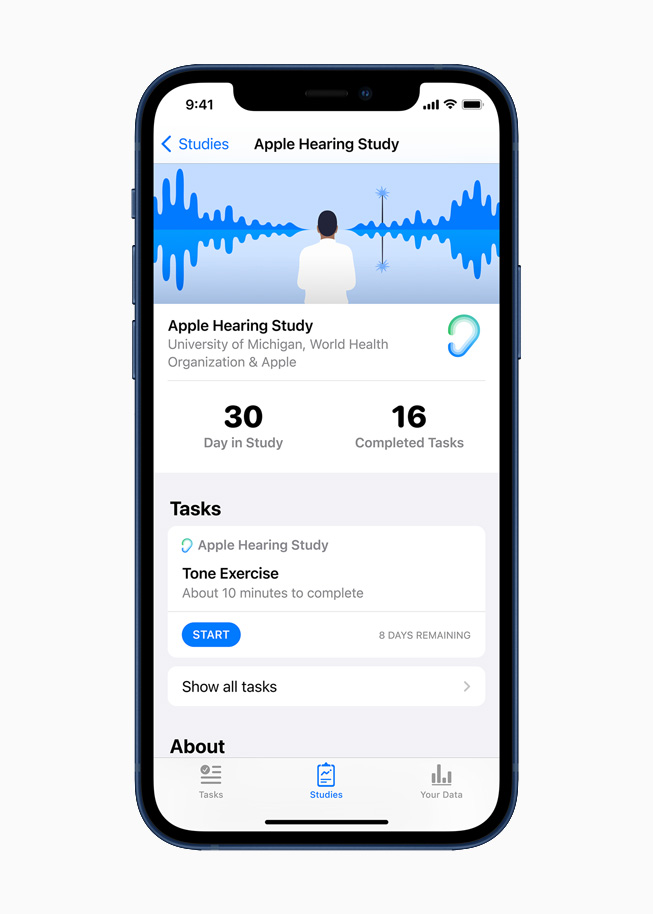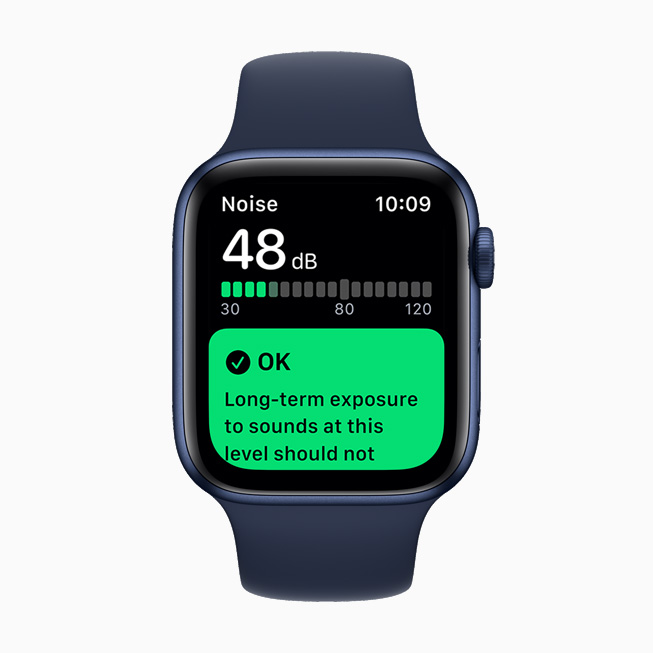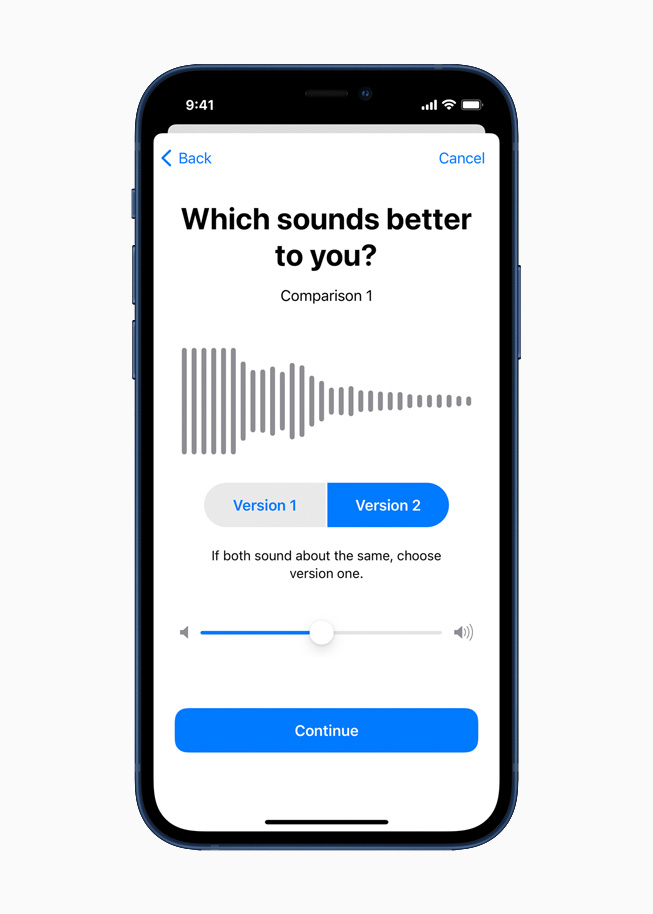UPDATE
03 March 2021
Apple Hearing Study shares new insights on hearing health
The Apple Hearing Study is sharing new data from thousands of participants across the US in an effort to help people better understand their hearing health.
The Apple Hearing Study is one of the studies launched within the Research app that are helping democratise how medical research is conducted by giving Apple customers the ability to participate in groundbreaking research using technology they’ve already made a part of their everyday lives. The study is being conducted in collaboration with the University of Michigan School of Public Health, and data is being shared with the World Health Organization’s Make Listening Safe initiative.
By 2050, the WHO estimates more than 700 million people globally will experience profound hearing loss. March 3 is designated as World Hearing Day, amplifying a global call to address hearing loss and related issues. Reduced hearing can affect a person’s health and well-being in many ways, such as contributing to reduced communication, feelings of isolation, loneliness, and withdrawal.
“Hearing loss can impact a person in many ways, and our goal is to drive increased focus on the importance of hearing health across decision makers and the general population,” said Ren Minghui, assistant director-general of the World Health Organization. “We encourage people to take the appropriate steps to protect their hearing and to seek care when needed.”
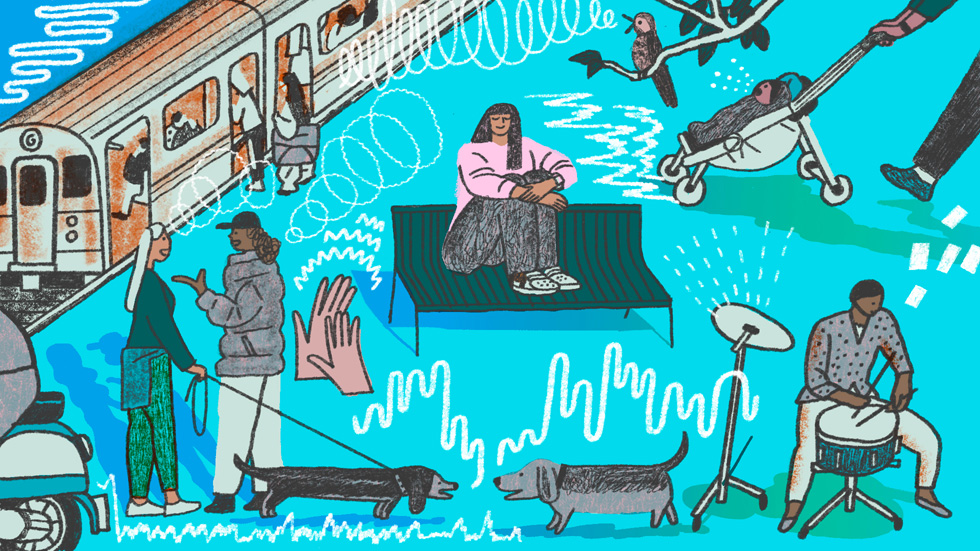
Apple Hearing Study: By the Numbers
The Apple Hearing Study allows users to participate and contribute to their long-term hearing health data from their Apple Watch and iPhone, allowing for study participation at a scale never seen before. The new insights generated leveraging this unprecedented data demonstrate that 25 per cent of participants experience a daily average environmental sound exposure (which can include traffic, machinery, public transport, and so on) that is higher than the WHO recommended limit. Also, nearly 50 per cent of participants now work, or have previously worked, in a loud workplace. As noise exposure has shown an impact on hearing, it’s important to be aware of surroundings. Checking noise levels with the Noise app on Apple Watch can be an effective way to be more aware of sound exposure.
Average weekly headphone exposure for one in 10 participants is higher than the WHO recommended limit. While catchy tunes can be tempting, listeners should consider listening to music and other media at the lowest enjoyable volume.
About 10 per cent of Apple Hearing Study participants have been diagnosed with hearing loss by a professional. Of these, 75 per cent do not use assistive support such as a hearing aid or cochlear implant, even though such devices can help reduce the impacts of hearing loss.
According to data collected using the study’s hearing tests, 20 per cent of participants have hearing loss when compared to WHO standards, and 10 per cent have hearing loss that is consistent with noise exposure.
Nearly 50 per cent of participants haven’t had their hearing tested by a professional in at least 10 years. And 25 per cent of participants experience ringing in their ears a few times a week or more, which could be a sign of hearing damage. Everyone should have their hearing health checked periodically by a professional.
“One year into the Apple Hearing Study, we’ve generated significant insights into everyday noise exposures and the impacts of those exposures on hearing among our participants. The national scale of this study is unprecedented. We look forward to sharing new scientific findings, as well as informing policy to improve and promote hearing health, as the study progresses,” said Rick Neitzel, associate professor of environmental health sciences at the University of Michigan School of Public Health. “Even during this pandemic, when many people are staying home, we’re still seeing 25 per cent of our participants experiencing high environmental sound exposures. The results of this study can improve our understanding of potentially harmful exposures, and help identify ways that people can proactively protect their hearing.”
Users across the US are participating in the Apple Hearing Study through the Research app.
How Apple Products Can Help
Apple technology provides extensive support to advance hearing health and accessibility with just a tap.
- Monitor and protect hearing health: With the Noise app, Apple Watch users can enable notifications that alert when environmental noise levels might affect their hearing health. The Health app on iPhone keeps track of a user’s history of exposure to sound levels, and informs whether headphones or environmental levels have exceeded those recommended by WHO standards.
- Use Apple devices to hear more clearly: AirPods, AirPods Pro, and AirPods Max can help hearing in loud places with Live Listen, which enables iPhone to function as a directional microphone. In addition, Transparency mode on AirPods Pro or AirPods Max can let outside sound in, so users can hear what’s going on around them.
- Set up Headphone Accommodations to make sound more crisp and clear: Through a series of listening tests, iPhone enables users to customise headphone audio to their preferences. With iOS, they can upload personal audiograms and then tailor headphone audio output to reflect unique audiogram data. Mono Audio settings are also available to support those who may have hearing loss in only one ear.
- Use the Made for iPhone hearing device program: Hearing aid and sound processor wearers can stream audio such as phone and FaceTime calls, music, Siri, and other content directly from iPhone to their hearing device. It is the most advanced and extensive smartphone-hearing device platform in the world, with nearly 200 hearing device models available from more than 40 manufacturers.
- Access support for the Deaf and Hard of Hearing community: Hearing accessibility on iOS includes several features to support people who are profoundly deaf or hard of hearing, like Sound Recognition; FaceTime, including sign language detection in Group FaceTime; sensory alerts; and Type to Siri.
For more information on hearing and other accessibility features, visit apple.com/nz/accessibility/hearing.
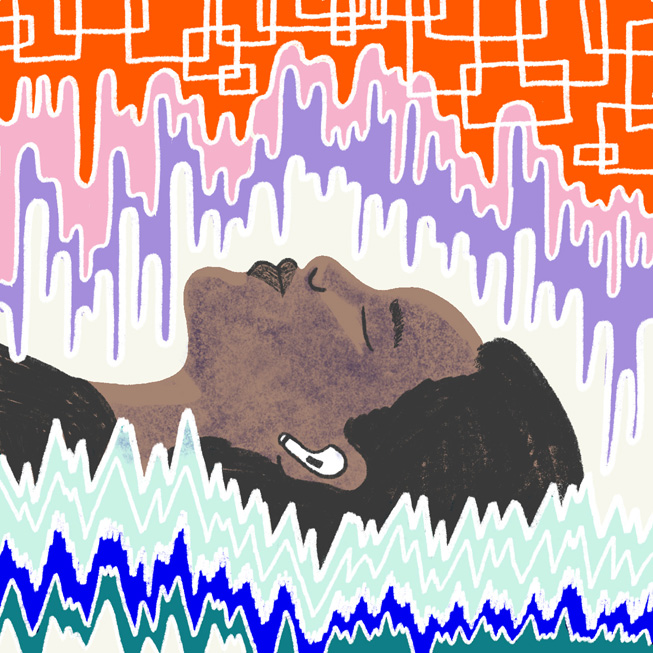
Share article
Images of Apple Hearing Study Update
